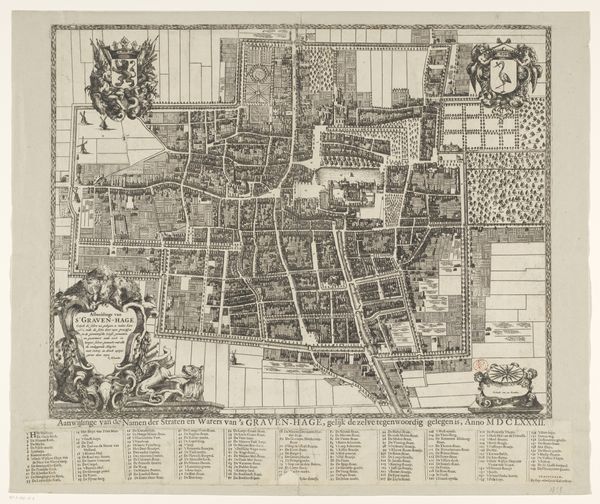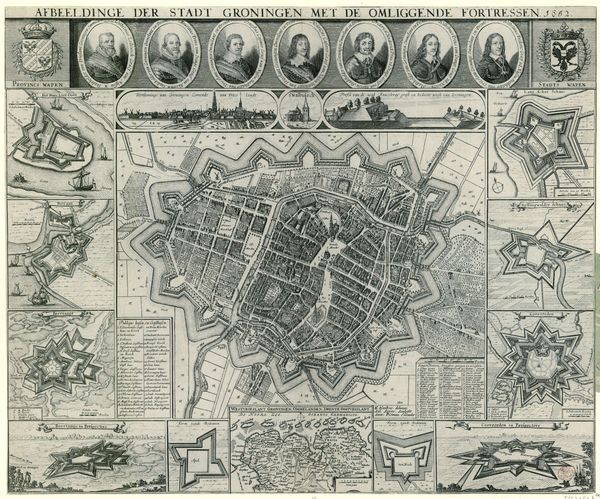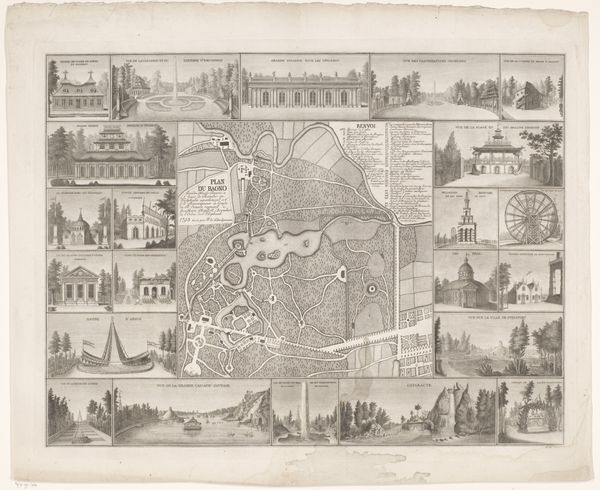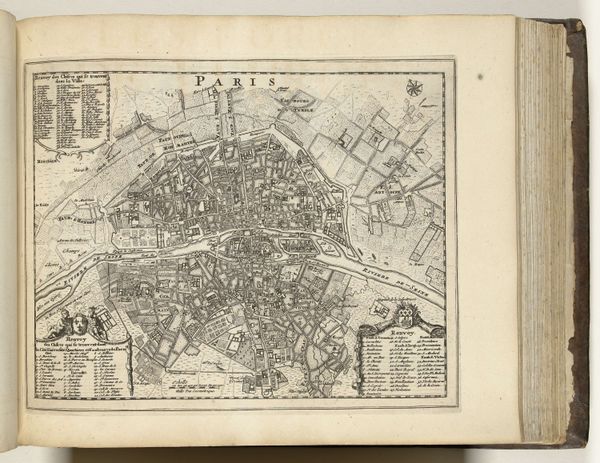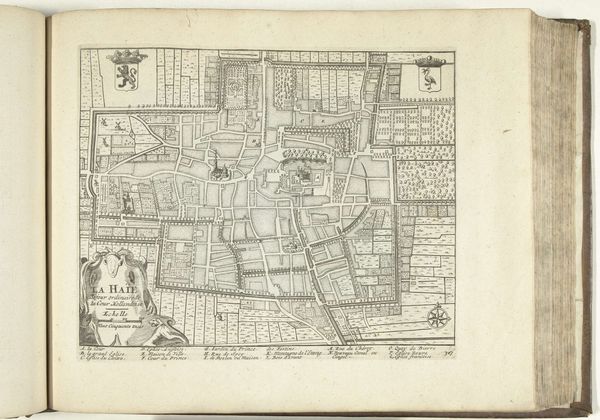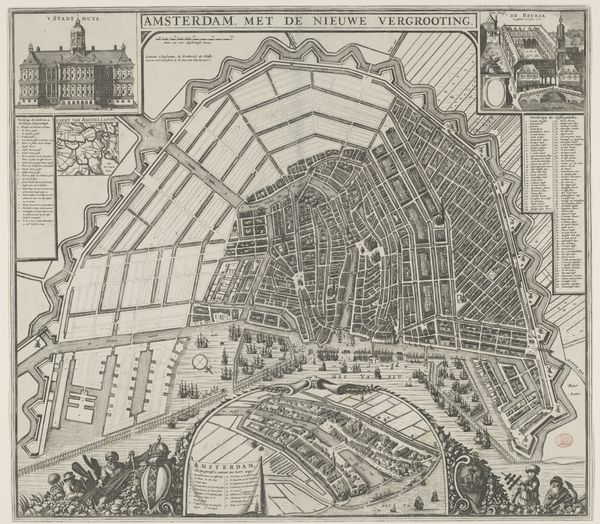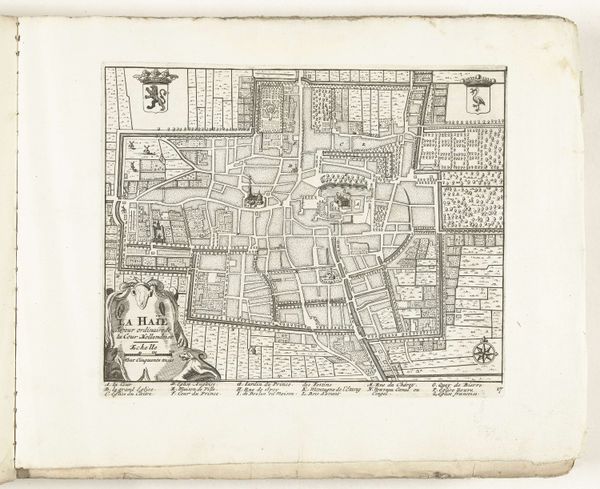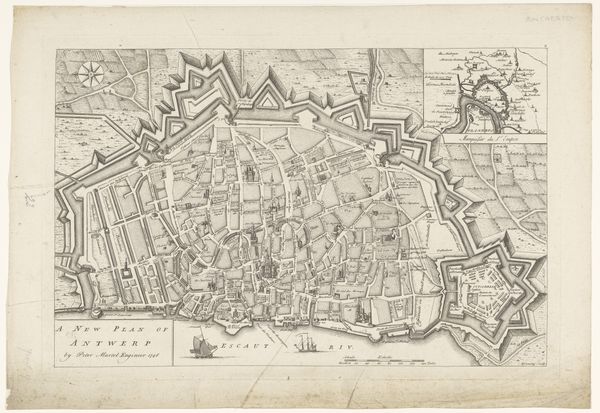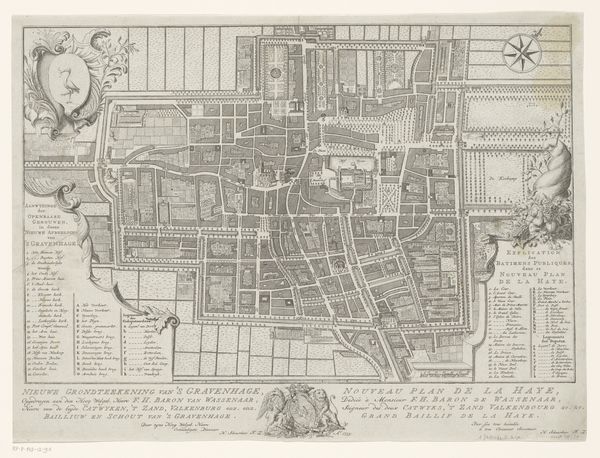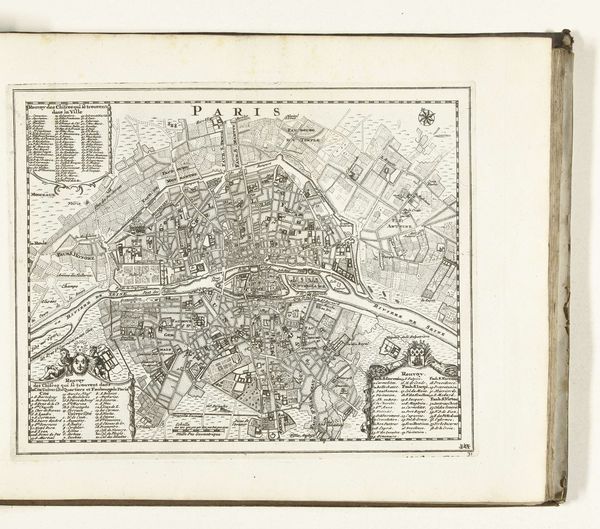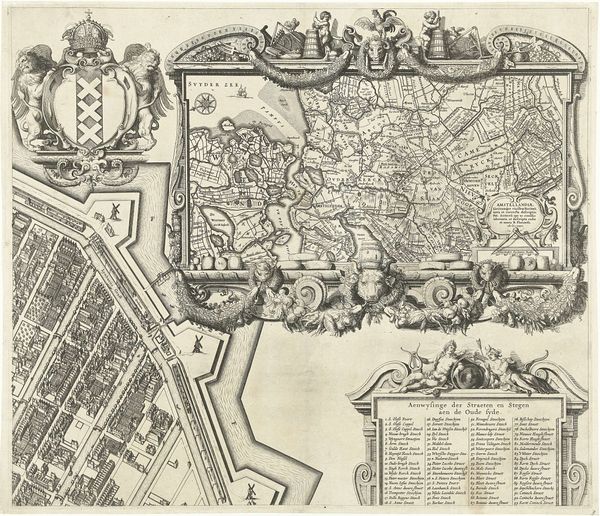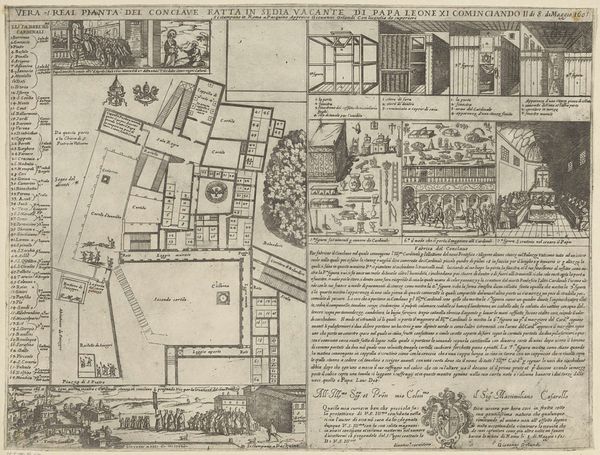
print, engraving
#
baroque
# print
#
perspective
#
cityscape
#
history-painting
#
engraving
Dimensions: height 230 mm, width 346 mm
Copyright: Rijks Museum: Open Domain
Curator: The work before us, housed at the Rijksmuseum, is entitled "Conclaaf na het overlijden van Innocentius X," created anonymously between 1655 and 1657. It is an engraving, offering a fascinating look at a specific historical event. Editor: It's quite intricate! At first glance, the stark linearity, and the sheer amount of detail give the impression of both precision and a certain...claustrophobia. The various scenes packed around the central architectural plan feel almost suffocating. Curator: Precisely! What strikes me is how the piece illustrates power, not just within the Vatican, but also through the meticulous mapping of space. It presents the Papal Conclave as a political machine, where the urban landscape mirrors hierarchical structures. We can infer the social climate by looking at this representation of space as an instrument of control. Editor: I’m more interested in the way it balances symbolic representation with structural detail. Note how the architectural plan anchors the composition, its sharp lines counterpointed by the more fluid narratives in the surrounding vignettes. This gives it a sense of order, like a blueprint not just of a building, but of an event, with clearly defined movements. Curator: Consider the images placed around the plan; they narrate rituals and processes involved in electing a new Pope after Innocentius X died. This illustrates a power transition occurring publicly, yet confined behind Vatican walls. It raises questions about the role of public image-making, specifically what aspects the Church chose to emphasize during times of leadership changes. Editor: I see that. What I'm finding engaging, however, is the dramatic play between the micro and macro. The print overall appears documentary; yet it leads the viewer’s eye intentionally from wider schematics right down to intensely intimate procedures inside those guarded chambers. That modulation itself expresses something crucial. Curator: Definitely. This "plan" also becomes a means to broadcast the legitimacy and unbroken legacy of the Papacy to audiences near and far. With an engraving such as this, reproduced repeatedly, it provided symbolic reinforcement that tradition persevered. Editor: Yes. Now seeing the engraving more completely as a totality…there’s a remarkable sense of designed integration, where no single pictorial method exists separate from some larger expressive, ideational unity of parts. Curator: Thank you, those insights have definitely heightened my appreciation for the design choices implicit to broadcasting the operations of this time. Editor: Likewise, thank you for helping me place such considerations into history.
Comments
No comments
Be the first to comment and join the conversation on the ultimate creative platform.
